Don't miss our holiday offer - up to 50% OFF!
Of Minoxidil: 100% Convincing & Thoroughly Detailed Explanation
Article Introduction
Data indicates that long-term topical minoxidil application has surprisingly broad rejuvenating effects on older adults. In the pursuit of beauty and self-confidence, hair health has become a key concern for many. For both men and women, thick, beautiful hair symbolizes youth and vitality. However, with increasing stress, genetic factors, and environmental changes, hair loss is becoming increasingly common, impacting people’s self-image and mental well-being. Among the many hair loss treatments available, minoxidil, as a widely researched and used medication, has garnered significant attention. This article will delve into the uses, effects, and precautions of minoxidil, providing a comprehensive understanding of this powerful hair loss treatment.
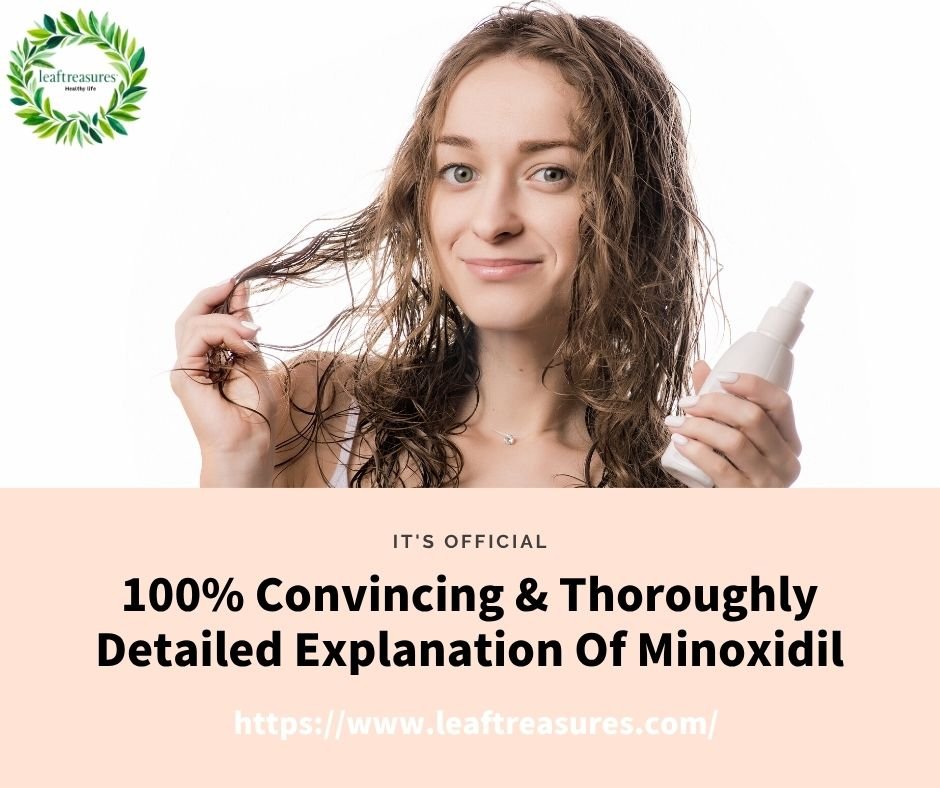
What Is the Use of Minoxidil?
Can Minoxidil Revive Dead Hair Follicles?
Minoxidil is a topical vasodilator primarily used to treat non-scarring hair loss, such as androgenic alopecia and alopecia areata. Its mechanism of action is to dilate scalp blood vessels, increasing blood supply to hair follicles, thereby stimulating the follicles to enter an active growth phase, promoting hair growth, and delaying hair follicle degeneration.
So far, there is no scientific evidence that minoxidil can restore dead hair follicles, nor can it directly “revive” completely dead hair follicles. It mainly works by dilating scalp blood vessels, increasing blood supply to hair follicles, and promoting the transition of hair follicles from the resting phase to the growth phase, thereby extending the hair growth cycle and increasing hair diameter. For hair follicles that are in the resting phase but not yet completely dead, minoxidil can significantly increase their activity and promote new hair growth. However, for hair follicles that have completely lost their function, minoxidil is powerless. We should face this situation squarely [1].
If your hair thinning is caused by dead hair follicles, you may want to consider other treatments, such as hair transplantation. Hair transplantation involves harvesting healthy hair follicles from the back of your head, processing them, and transplanting them into the area where your hair is thinning, potentially creating thicker hair.
Here, we need to reiterate that minoxidil primarily works by dilating scalp blood vessels, increasing blood supply to hair follicles, and promoting the transition of hair follicles from the resting phase to the growing phase, thereby prolonging the hair growth cycle and increasing hair diameter. To date, there is indeed no scientific evidence that minoxidil can revive dead hair follicles , so we need to further analyze and explore whether topical minoxidil is sufficiently effective in common hair areas, such as eyebrows, hairline, and beards. Let’s continue reading:
Can You Use Minoxidil on Eyebrows?
Specifically, topical minoxidil is FDA-approved for use on the scalp to promote new hair growth, not on the eyebrows . While minoxidil is primarily used on the scalp to treat hair loss, it can theoretically be used on the eyebrows to promote growth. However, caution is advised, as the skin in the eyebrow area is sensitive, and improper use may cause adverse reactions such as redness, swelling, and itching.
Minoxidil is a vasodilator that can directly act on the blood vessel walls in the eyebrow area, dilating the subcutaneous blood vessels in the sparse eyebrow area and increasing the blood flow in the subcutaneous blood vessels, thereby improving the blood circulation around the hair follicles in the eyebrow area, providing sufficient nutrition for the local hair papilla, and promoting hair growth.
However, there are certain risks associated with the use of minoxidil topical preparations on the eyebrows:
- Skin irritation : Some people may have an allergic reaction to minoxidil and may experience symptoms such as skin redness, burning pain, and wheals after use. In this case, you need to stop taking the drug immediately and go to the dermatology department of the hospital for treatment.
- Risk of hirsutism : Long-term or improper use of minoxidil may cause local hair follicles to be highly sensitive to the drug, causing hirsutism. Symptoms may gradually improve after stopping the drug.
- Restrictions on use : The instructions for drugs such as minoxidil tincture clearly state that they are only for local use on the scalp. The skin around the eyebrows is delicate, and adverse drug reactions are more likely to occur after application.
Recommended use :
- Strictly follow the doctor’s instructions and control the dosage and frequency of medication.
- Closely observe the growth of eyebrows and skin reactions during medication. If discomfort occurs or the condition worsens, seek medical attention and adjust the medication plan in time.
- Keep your eyebrows clean and avoid using harsh toiletries.
In summary: You can apply minoxidil topical preparations on your eyebrows under the guidance of a doctor to promote eyebrow growth, but you must strictly follow the doctor’s instructions and not operate without authorization . Let’s continue reading
Does Minoxidil Work for Beard?
Minoxidil has a certain effect on beard growth, but the effect varies from person to person and there are potential risks, so it should be used with caution .
Minoxidil is a vasodilator originally used to treat high blood pressure. However, it was later discovered that its topical application can promote hair growth, leading to its widespread use in the treatment of androgenic alopecia and alopecia areata. Its mechanism of action is to dilate blood vessels, improving blood circulation around hair follicles, providing them with more nutrients and oxygen, thereby stimulating hair growth.
Minoxidil may work through a similar mechanism for beard growth. Some studies and clinical observations suggest that topical application of minoxidil may increase hair follicle activity and promote beard growth. However, this effect is not significant in all individuals and is affected by various factors, including individual differences, hair follicle status, and application method.
Potential risks and precautions :
- Skin irritation : Minoxidil may cause local skin irritation, such as redness, itching, burning, etc. Facial skin is more sensitive than the scalp, and more obvious adverse reactions may occur after use.
- Hirsutism : Long-term or improper use of minoxidil may lead to unwanted hair growth in other areas of the face, such as the cheeks and neck.
- Systemic reactions : Although rare, long-term, large-area use of minoxidil may be absorbed through the skin into the blood, causing systemic reactions such as hypotension and dizziness.
- Limitations of Use : Minoxidil is not specifically designed to promote beard growth, and its efficacy and safety are not adequately researched for facial use. Therefore, consult a healthcare professional before use to assess the potential benefits and risks.
Recommended use :
- Consult a doctor : Before considering using minoxidil to promote beard growth, you should consult a dermatologist or other healthcare professional. They can assess the potential benefits and risks of using minoxidil based on your specific situation and provide appropriate guidance on its use.
- Standard use : If your doctor thinks minoxidil can be used, you should use it strictly according to the doctor’s instructions and avoid the drug coming into contact with other parts of the skin to prevent unnecessary hair growth.
- Observe your reactions : During use, closely observe your body’s reactions. If you experience discomfort or ineffectiveness, consult a doctor to adjust your treatment plan.
- Consider other methods : If minoxidil is ineffective or there are risks, you can consider other methods to promote beard growth, such as hair transplantation, androgen supplementation, etc. However, these methods must also be performed under the guidance of a doctor.
We have explained some of the effects of minoxidil on eyebrows and beards. Let’s focus on the issue that people are most concerned about: whether minoxidil can help with hair loss.
Does Minoxidil Work on Hairline?
Minoxidil significantly improves hair loss problems such as a receding hairline. By promoting hair follicle activity and prolonging the hair growth cycle, minoxidil can help restore hair density at the hairline and improve the appearance of hair loss. However, it is important to note that treatment results vary from person to person, and continued use is required to maintain the effects.
Applicable situations
- Incomplete closure of hair follicles : Minoxidil is effective for a receding hairline caused by incomplete closure of hair follicles. By stimulating hair follicle growth and prolonging the growth phase, minoxidil can help restore hair density at the hairline.
- Early-stage mild to moderate hair loss : Minoxidil may improve the condition of mild to moderate receding hairlines. Clinical observations show that some users experience thickening of fine hair and reduced hair loss after 3-6 months of use.
limitation
- Completely closed hair follicles : If the hair follicles in your hairline are completely closed, minoxidil will generally not improve the condition. In this case, you may need to consider other treatments, such as hair transplant surgery.
- Individual differences : Due to differences in each person’s constitution and the cause of hair loss, the effectiveness of minoxidil may vary. Some people may respond well to the drug, while others may not respond significantly.
- Hereditary hair loss : For hairline problems caused by hereditary hair loss, minoxidil may have difficulty reversing the effects of completely atrophied hair follicles.
Usage suggestions
- Use the medicine as directed by your doctor : Before using minoxidil, you should consult a professional doctor to evaluate the potential benefits and risks and obtain correct usage instructions.
- Standard use : Use minoxidil strictly according to the doctor’s instructions and avoid contact with other parts of the skin to prevent unnecessary hair growth.
- Observe your reactions : During use, closely observe your body’s reactions. If you experience discomfort or ineffectiveness, consult a doctor to adjust your treatment plan.
- In combination with other treatments : For severe hair loss or a receding hairline that has persisted for a certain period of time, the chances of improvement with medication may be significantly reduced. In such cases, other treatments such as microneedling, low-intensity laser therapy, or hair transplant surgery may be considered.
We have explained the theoretical research and effects of minoxidil from a pharmacological perspective, but is it applicable to everyone?
Is Minoxidil Effective for Everyone?
Minoxidil isn’t effective for everyone. Its effectiveness depends on a variety of factors, including the type and severity of hair loss, the state of the hair follicles, and the individual’s response to the medication. Generally speaking, patients with early-stage hair loss respond more effectively to minoxidil. For those with advanced hair loss or severely atrophied hair follicles, minoxidil may not be as effective as expected.
Applicable groups and restrictions
Minoxidil is mainly suitable for the following people:
- People with androgenic alopecia : Androgenic alopecia is a common type of hair loss characterized by gradual thinning of the hairline on the top of the head or forehead. Minoxidil dilates scalp blood vessels, improving blood circulation to hair follicles, thereby slowing the progression of hair loss and promoting new hair growth.
- Patients with mild or moderate hair loss : Minoxidil is more effective for early or mid-stage hair loss. For patients with mild hair loss, minoxidil can effectively prevent further hair loss and promote the recovery of some hair follicles.
- People with a healthy scalp and no severe inflammation or infection : Minoxidil is applied directly to the scalp, so the health of your scalp is crucial. If you have severe inflammation, infection, or open wounds on your scalp, using minoxidil may worsen your symptoms or cause discomfort.
- Patients who adhere to medication : Minoxidil requires long-term, regular use, typically twice daily, for several months or even longer to be effective. The treatment effect is more pronounced in patients who adhere to the medication.
- People who have been evaluated by a doctor and confirmed to be suitable for use : Although minoxidil is an over-the-counter drug, it is not suitable for everyone. For example, pregnant women, breastfeeding women, and people with specific health problems should use it with caution.
Effect and time of use
Minoxidil typically requires several months of continuous use to see noticeable results. Generally, it should be used for at least 3-6 months, though some patients may need longer. Initially, you may experience a temporary increase in hair loss, which is part of the hair cycle synchronization process and is generally not cause for concern. With continued treatment, hair loss should gradually improve.
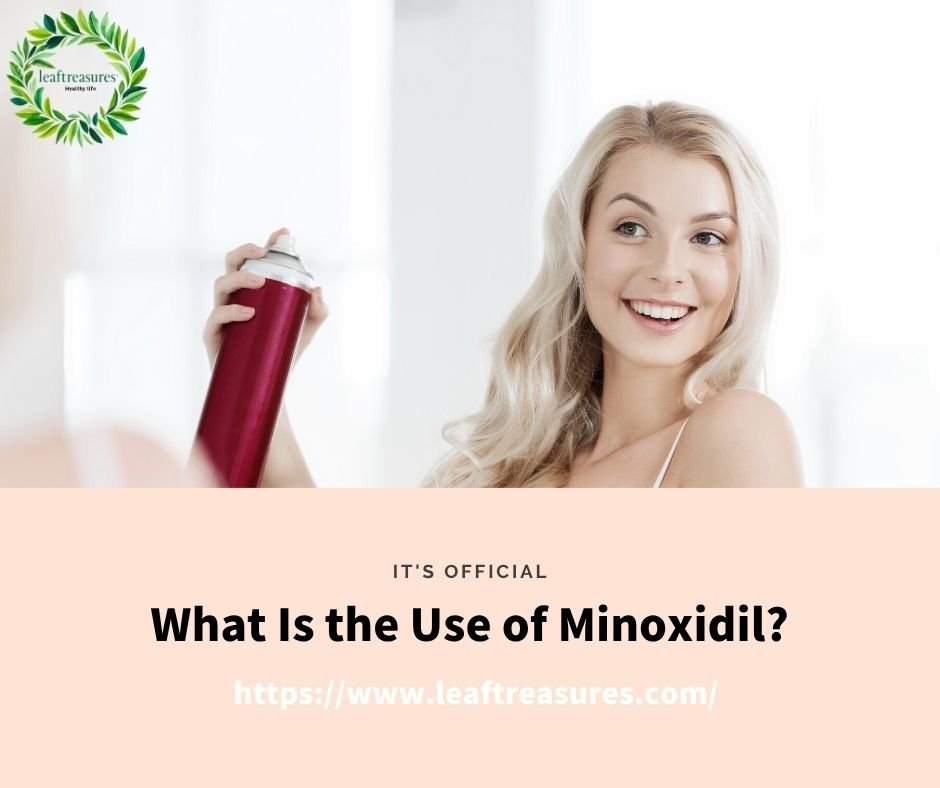
Precautions for Using Minoxidil
After explaining the effects and efficacy of minoxidil, in order to better use minoxidil, we should also have a deep understanding of how we should use minoxidil and some related side effects.
How to use minoxidil?
The issues that everyone is most concerned about are how much dosage I should use, the specific frequency, and whether I can achieve permanent results for my hair growth in one go. In this chapter, we will explain them in detail.
How Much Minoxidil to Use?
The recommended dosage of minoxidil varies depending on the product type and concentration. Generally, the recommended dosage of topical minoxidil solution is 1 ml (approximately 7 sprays) twice daily, applied directly to the scalp in the areas of hair loss. Ensure the scalp is dry during use and avoid contact with eyes or other mucous membranes.
How Often to Apply Minoxidil?
Minoxidil is typically used twice daily, morning and evening. Consistent use is key, as hair growth cycles are long and require sufficient time to see results. Interruptions may cause the treatment effects to diminish or disappear.
Is minoxidil permanent?
The effects of minoxidil are not permanent. Once you stop using it, your hair follicles may gradually return to their resting phase, causing hair loss to recur. Therefore, to maintain the effects of minoxidil, patients usually need to use it long-term or even lifelong.
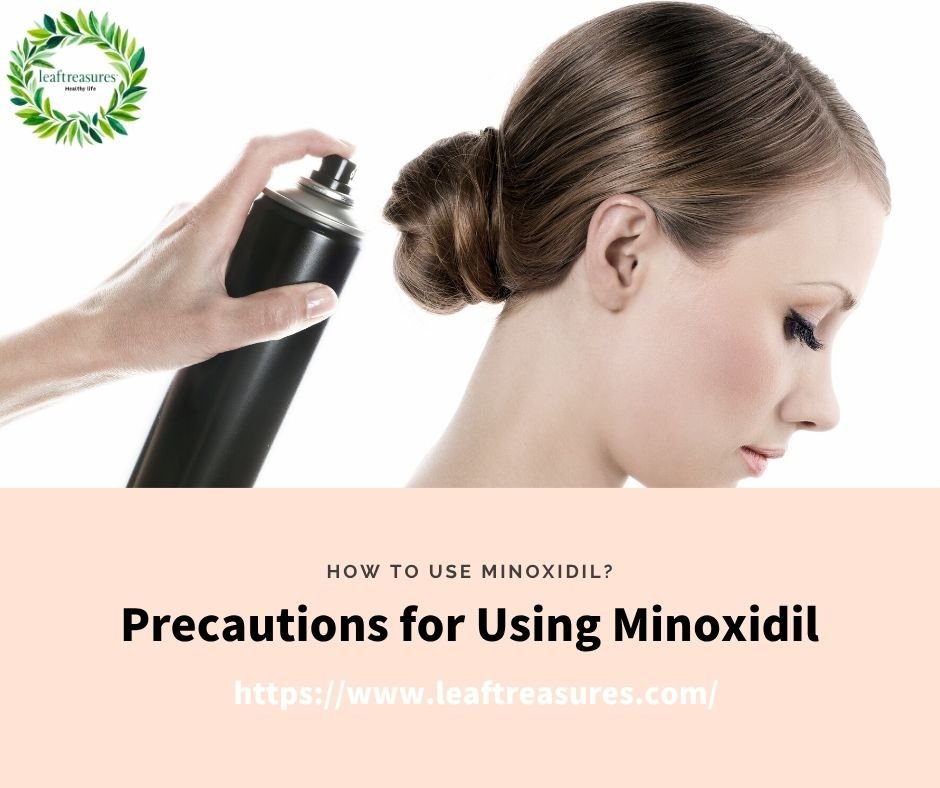
Does minoxidil have any side effects?
Here, we will conduct more in-depth research and explanation on the side effects of minoxidil to help everyone establish a correct scientific understanding of it.
Can Minoxidil Cause Cancer?
There is currently no conclusive evidence that minoxidil causes cancer. Multiple studies have shown that minoxidil is safe when used at recommended doses. However, long-term, high-dose, or improper use may increase the risk of adverse reactions.
Does minoxidil cause dandruff?
Some users may experience increased dandruff in the early stages of minoxidil use. This may be due to the drug’s increased scalp cell turnover. Dandruff generally subsides with continued use.
Does minoxidil cause erectile dysfunction?
Topical minoxidil rarely causes erectile dysfunction. This side effect is more common with oral minoxidil and occurs less frequently. However, men at risk for sexual dysfunction should consult their doctor before use.
Does minoxidil cause acne?
Minoxidil may cause local skin irritation, including redness, itching, and an acne-like rash. This is usually related to direct irritation of the skin by the drug. If such symptoms occur, reduce the dosage or discontinue use and consult a doctor.
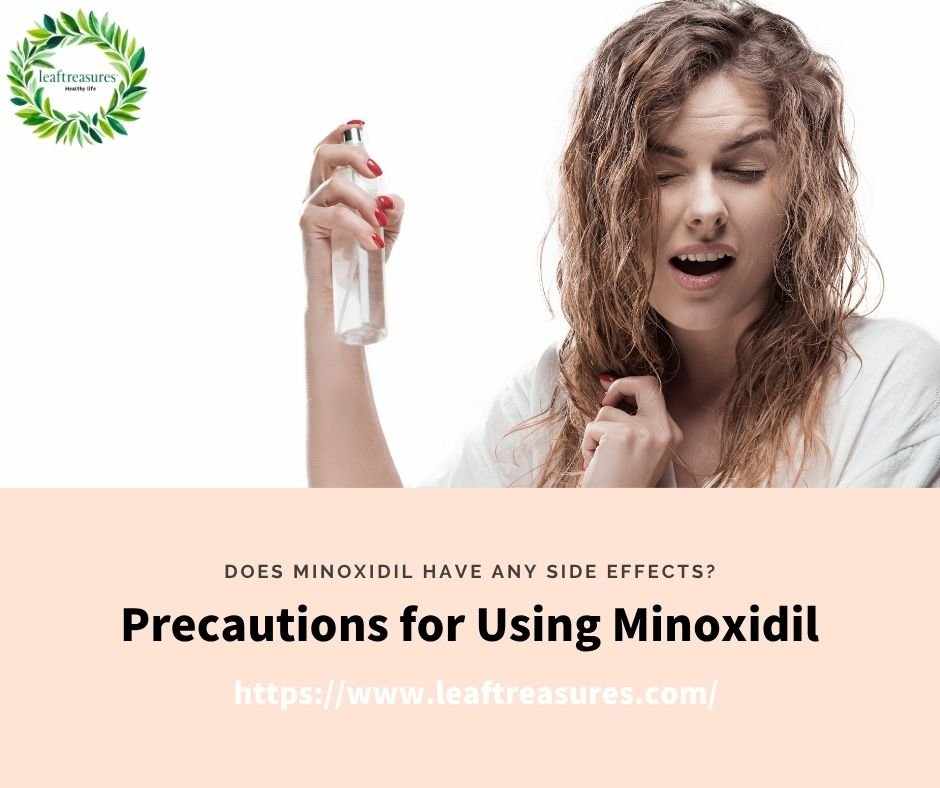
What other problems are there in using minoxidil?
If you happen to have hair growth needs, you can choose Hair Growth Treatment ,If you have other health needs, you can also go to our health mall to purchase.
The author has consulted a lot of information and related forum communities to supplement some common questions. If you also have related questions that need answers, please leave a message in our comment area and we will reply as soon as possible.
Does minoxidil expire?
Yes, minoxidil products do have an expiration date. Expired products may lose their effectiveness or produce harmful substances. Before use, check the production date and expiration date to ensure the product is safe and effective.
Can Women Use Minoxidil for Men?
Women can use minoxidil on men, but they should be aware of the product’s concentration and dosage. Different genders and hair loss types may require different treatment plans. Therefore, it’s best to consult a healthcare professional before use.
Is Oral Minoxidil Better Than Topical?
There are differences in the therapeutic effects of oral and topical minoxidil. Oral medications may promote hair growth through systemic effects, but they also come with more side effects. Topical medications act directly on the scalp and have fewer side effects. The choice of which method to use depends on the patient’s specific condition and the doctor’s advice.
Do you have to take minoxidil forever?
Whether long-term minoxidil use is necessary depends on the type and severity of hair loss and the patient’s response to the medication. For some patients, short-term use may be sufficient to improve hair loss, while others may require long-term or even lifelong use to maintain the effects of treatment.
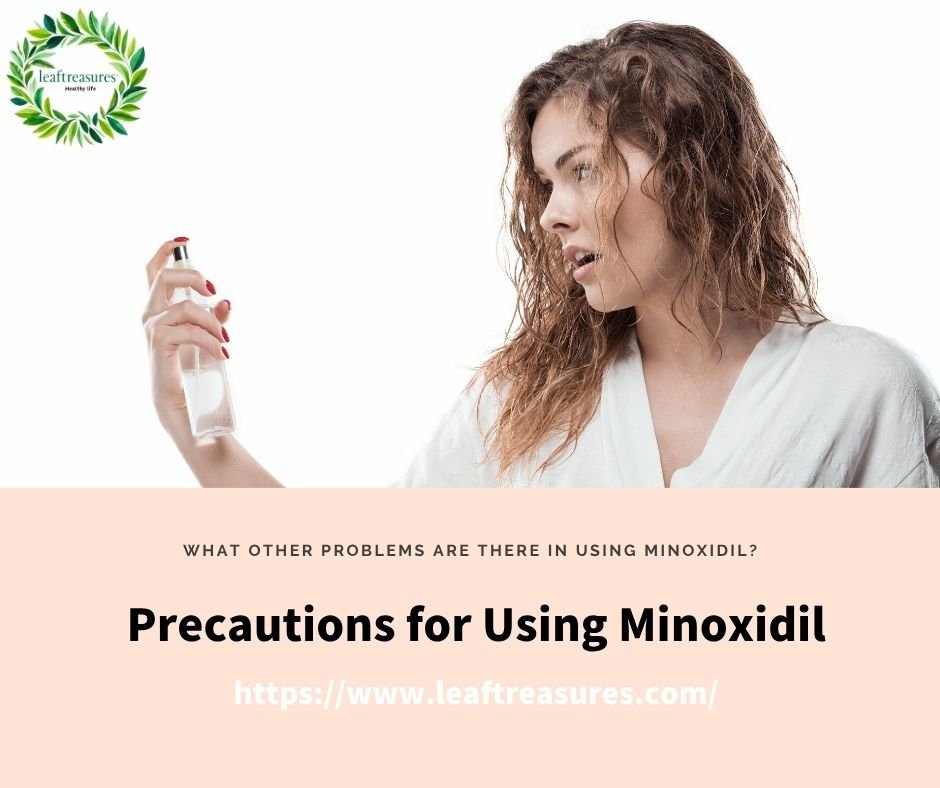
Article Summary
Minoxidil, an effective treatment for hair loss, demonstrates remarkable results in promoting hair follicle activity and prolonging the hair growth cycle. However, its effectiveness varies from person to person, and continued use is necessary to maintain its effectiveness. During use, patients should be aware of dosage, frequency, and possible side effects, and should only use it under the guidance of a professional physician. Through the scientific and appropriate use of minoxidil, many hair loss patients have regained their full, lush hair, their confidence, and their beauty.
If you enjoy our articles, please follow our blog; we will update new content weekly for you to learn more about comprehensive health information.


[…] growth serums, applied directly to the scalp, deliver concentrated active ingredients such as minoxidil (a vasodilator approved by the FDA for androgenic alopecia) or biotin (a B-vitamin essential for […]
[…] What is minoxidil used for? […]